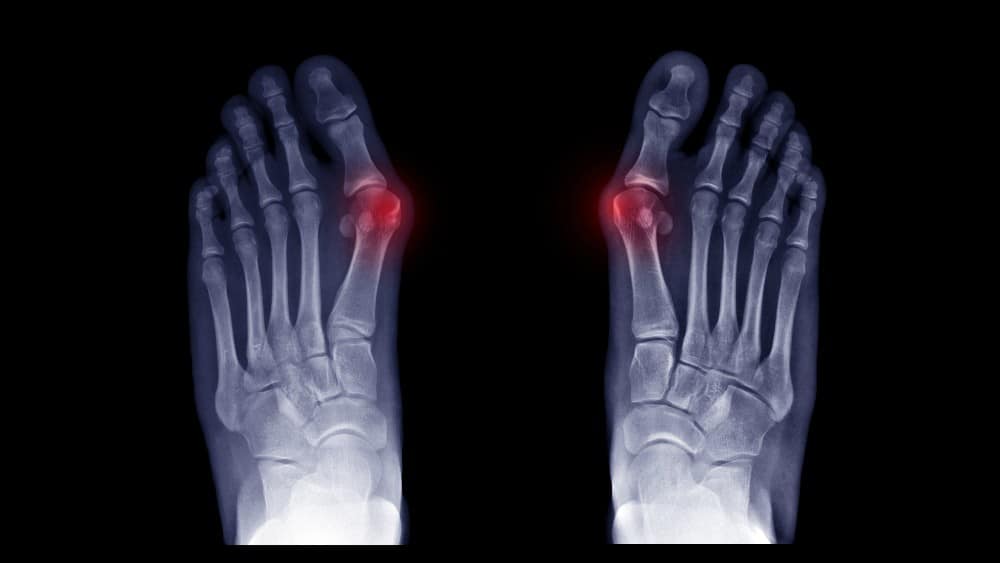What Should I Know About Bunions?
Are you suffering from persistent big toe pain? Perhaps your feet are starting to change shape, making walking a little trickier and a little less enjoyable? If these symptoms ring a bell, you may be suffering from bunions. While the name may sound sinister, bunions are incredibly common and highly treatable. In fact, up to a third of Americans are thought to have bunions, with women and older adults particularly affected. If you suspect you’re suffering from bunions on one or both of your feet, we’ve put together a handy guide to help you find the treatment you need.
What Exactly Is a Bunion?
A bunion is a painful bump that typically forms on the outside of the big toe (or – if you’re keen to get technical – the metatarsophalangeal joint). Most bunions take several years to grow, becoming increasingly bothersome as they increase in size. People with severe bunions often find that their big toe starts to point inwards toward the little toes, causing the foot to look deformed.
Although most bunions occur in adulthood and grow on the big toe joint, there are a few other types of which to be aware, including:
- Congenital bunions: Sometimes, babies are born with bunions on their feet.
- Juvenile bunions: In rare cases, children between the ages of 10 and 15 may develop bunions.
- Tailor’s bunion or bunionette: This type of bunion forms around the little toe, rather than the big toe.
What are the Symptoms of Bunions?
Symptoms of bunions include:
- Hard lumps on the outside of the feet
- Inflamed or swollen skin around the lump
- Pain that extends along the bottom or side of the affected foot
- Inability to bend the big toe
- Numbness in the big toe
- Difficulty wearing shoes that used to fit well
Bunions are usually pretty easy to spot (especially if they prevent you from engaging in your favorite sports and hobbies!). To prevent your bunion(s) from getting worse, we recommend seeking help early.
Do We Know What Causes a Bunion?
There are no definitive theories as to why bunions develop, meaning they can pop up out of nowhere and affect a broad range of people. Some people believe that wearing high heels or narrow shoes can contribute to the development of bunions, while others believe they’re caused by inherited foot shapes or prior injuries.
Some medical and lifestyle factors may also increase your risk of developing bunions, including:
- Having rheumatoid arthritis
- Wearing ill-fitting shoes for long periods of time
- Standing for long periods of time
How Do You Treat Bunions?
The only way to banish your bunions for good is to undergo surgery. However, if they’re not causing huge amounts of pain or bother, you may wish to opt for more conservative bunions treatments.
What Should I Try First?
You can relieve the symptoms of bunions in one or more of the following ways:
- Changing your footwear: While no one’s quite sure whether ill-fitting footwear can cause bunions, it can certainly make them worse. If you tend to opt for style over comfort, we recommend reassessing your priorities and investing in a comfier pair of shoes. High heels aren’t worth decades of foot pain!
- Bunion pads: You can purchase over-the-counter bunion pads from most good drug stores. These disposable pads are great for cushioning the area while you’re walking or exercising. If necessary, you can fix the pads in place using medical tape.
- Pain relievers: Some people use topical and oral pain relievers to cope with pain and swelling. However, we don’t recommend taking pain relievers as a long-term solution. If your bunion pain is debilitating, surgery may represent the best treatment option.
- Steroid injections: Steroids may help reduce pain in patients who cannot undergo surgery for any reason.
- Orthotics: Orthotic devices can help align your feet and prevent the worsening of your bunions. Some people also wear spacers between their big toe and second digit to prevent the big toe from bending inward.
- Physical therapy: Massage and physical therapy may help to reduce pain and inflammation.
What if Those Don’t Work?
If the above treatments are unable to offer adequate relief, our podiatrists may recommend that you undergo bunion surgery (also known as a bunionectomy). While the prospect of surgery may sound scary, bunionectomies are relatively simple procedures designed to improve your quality of life and prevent further complications caused by your bunions.
After surgery, you’ll need to stay off your feet for at least two weeks, avoid driving for around eight weeks and avoid sports for up to half a year.
Get the Help You Need with Bunions!
Is your big toe pain getting you down? Whether your bunion is small or causing significant deformation of your foot, Richardson Podiatry Center is ready and waiting to hear from you. To make an appointment or discuss your needs, call us at (972) 690-5374 or fill out a contact form.

